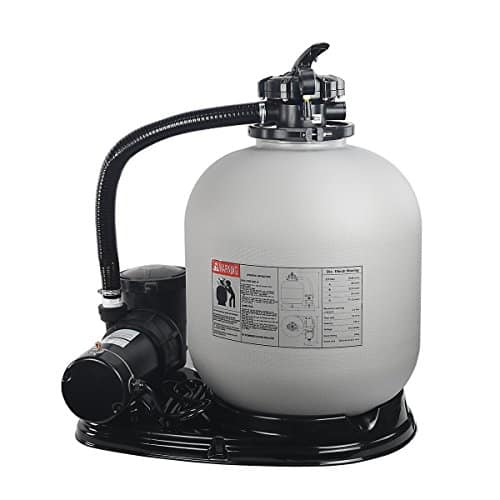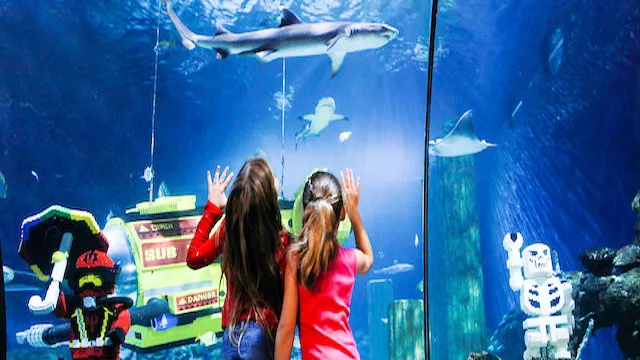List of the Largest Aquariums in the USA: Explore Marine Wonders
The United States is home to a remarkable array of aquatic wonders, and the adventure begins with a journey through the largest aquariums in the country. These marine sanctuaries not only showcase the beauty of underwater ecosystems but also play a crucial role in education, conservation, and research. Let’s take a deep dive into each of these extraordinary destinations, unveiling the secrets that make them must-visit attractions for marine enthusiasts and families alike.
1. Georgia Aquarium (Atlanta, Georgia)
Overview:
The Georgia Aquarium, located in the heart of Atlanta, is a true titan among aquariums, boasting an impressive 10 million gallons of water. Its crown jewel is undoubtedly the Ocean Voyager exhibit, a massive tank that houses awe-inspiring whale sharks, the largest fish in the sea. The aquarium’s commitment to conservation is evident in its groundbreaking research initiatives and efforts to raise awareness about marine life.
Highlights:
- Ocean Voyager Exhibit: Home to not only whale sharks but also manta rays and a variety of other marine species.
- Penguin Point: A charming exhibit featuring playful penguins in a habitat mimicking their natural environment.
2. Monterey Bay Aquarium (Monterey, California)
Overview:
Nestled on the stunning California coast, the Monterey Bay Aquarium is celebrated for its commitment to marine conservation and sustainable seafood practices. The aquarium’s exhibits are designed to showcase the rich biodiversity of the Pacific Ocean, making it a captivating destination for visitors of all ages.
Highlights:
- Kelp Forest Exhibit: A mesmerizing display of the underwater giant kelp ecosystem, home to sea otters and countless fish species.
- Jellyfish Gallery: Delicate and ethereal, the jellyfish exhibit is a favorite among visitors, offering a hypnotic display of these graceful creatures.
3. Shedd Aquarium (Chicago, Illinois)
Overview:
Situated on the shores of Lake Michigan, the Shedd Aquarium in Chicago is not only an architectural gem but also a hub for aquatic education and conservation. Its diverse exhibits span the world’s oceans, providing a comprehensive look at marine life from different regions.
Highlights:
- Wild Reef Exhibit: Transporting visitors to the coral reefs of the Philippines, this exhibit features sharks, rays, and vibrant coral formations.
- Amazon Rising: An immersive journey into the Amazon Rainforest, complete with piranhas, anacondas, and other exotic species.
4. National Aquarium (Baltimore, Maryland)
Overview:
The National Aquarium in Baltimore stands as a beacon of marine education and conservation on the East Coast. Its innovative exhibits showcase a wide range of marine environments, from the bustling Atlantic Coral Reef to the serene beauty of a tropical rainforest.
Highlights:
- Dolphin Discovery: Witness the playful antics and intelligence of Atlantic bottlenose dolphins in this interactive exhibit.
- Blacktip Reef: A vibrant exhibit featuring a diverse array of reef-dwelling species, including blacktip reef sharks.
5. Tennessee Aquarium (Chattanooga, Tennessee)
Overview:
Situated on the banks of the Tennessee River, the Tennessee Aquarium offers a unique perspective on freshwater ecosystems. Its engaging exhibits highlight the biodiversity of the region, from the Appalachian Cove Forest to the bustling River Journey.
Highlights:
- River Otter Falls: Delight in the playful antics of river otters as they navigate their cascading waterfall habitat.
- Delta Country: Explore the rich aquatic life of the Mississippi River Delta, home to turtles, alligators, and catfish.
6. Dallas World Aquarium (Dallas, Texas)
Overview:
The Dallas World Aquarium is a captivating blend of terrestrial and aquatic environments, transporting visitors to the heart of Central and South American rainforests. This unique approach creates an immersive experience that showcases the interconnectedness of land and sea.
Highlights:
- Orinoco Secrets of the River: A journey through the rainforests of Venezuela, featuring manatees, caimans, and exotic birds.
- Aquatic Tunnel: Walk beneath a tunnel surrounded by sharks, rays, and other marine life for a truly immersive experience.
7. New England Aquarium (Boston, Massachusetts)
Overview:
Perched on the historic Boston waterfront, the New England Aquarium is a gateway to the wonders of the Atlantic Ocean. Its commitment to marine research and conservation is evident in its exhibits, which highlight both local and global marine ecosystems.
Highlights:
- Giant Ocean Tank: A colossal cylindrical tank featuring a coral reef environment with sea turtles, rays, and sharks.
- Seadragon Exhibit: Discover the delicate beauty of seadragons, relatives of seahorses, in a captivating display.
8. Mystic Aquarium (Mystic, Connecticut)
Overview:
Mystic Aquarium, located in the charming town of Mystic, Connecticut, is not only a destination for marine enthusiasts but also a hub for marine research and conservation. Its engaging exhibits and interactive displays make it a family-friendly experience.
Highlights:
- Arctic Coast Exhibit: Explore the wonders of the Arctic, including beluga whales, puffins, and playful seals.
- Ray Touch Pool: A hands-on experience where visitors can gently touch and interact with graceful rays.
9. Aquarium of the Pacific (Long Beach, California)
Overview:
Situated in Long Beach, California, the Aquarium of the Pacific celebrates the rich marine life of the Pacific Ocean. With a diverse range of exhibits, it offers a comprehensive exploration of the ecosystems that thrive along the West Coast.
Highlights:
- Southern California/Baja Gallery: An exhibit showcasing the vibrant underwater life of the California coast, from kelp forests to rocky shores.
- Pacific Visions: A cutting-edge facility focused on exploring the future of the Pacific Ocean and the impact of human actions.
10. Seattle Aquarium (Seattle, Washington)
Overview:
Perched on the shores of Puget Sound, the Seattle Aquarium provides a captivating glimpse into the marine life of the Pacific Northwest. Its location allows for a unique focus on the diverse ecosystems that characterize this region.
Highlights:
- Window on Washington Waters: A massive exhibit featuring a 120,000-gallon tank showcasing the local marine life of Puget Sound.
- Marine Mammal Exhibits: Get up close and personal with harbor seals, sea otters, and the elusive giant Pacific octopus.
11. Florida Aquarium (Tampa, Florida)
Overview:
Dive into the warm waters of the Gulf of Mexico at the Florida Aquarium, located in the vibrant city of Tampa. This aquarium goes beyond traditional exhibits, offering immersive experiences and educational programs for visitors of all ages.
Highlights:
- Coral Lagoon: An underwater garden of vibrant coral formations, home to a diverse array of tropical fish.
- Wetlands Trail: Explore the coastal ecosystems of Florida, encountering alligators, otters, and a variety of wading birds.
12. Newport Aquarium (Newport, Kentucky)
Overview:
Situated on the banks of the Ohio River, the Newport Aquarium is a gem in the Midwest, offering a unique blend of interactive exhibits and awe-inspiring displays. Its commitment to conservation is evident in its efforts to raise awareness about endangered species and habitats.
Highlights:
- Surrounded by Sharks: Walk through an underwater tunnel surrounded by sharks, rays, and other marine life.
- Amazon Rainforest: Encounter anacondas, piranhas, and poison dart frogs in an exhibit that brings the Amazon to Kentucky.
13. South Carolina Aquarium (Charleston, South Carolina)
Overview:
Immersed in the historic charm of Charleston, the South Carolina Aquarium showcases the diverse ecosystems of the Southeast. With a focus on both freshwater and saltwater habitats, it provides a comprehensive look at the aquatic life that thrives in the region.
Highlights:
- Great Ocean Tank: A massive tank featuring a replica of a sunken ship surrounded by a diverse array of marine species.
- Sea Turtle Recovery: Learn about the conservation efforts dedicated to rehabilitating and releasing injured sea turtles.
14. Virginia Aquarium & Marine Science Center (Virginia Beach, Virginia)
Overview:
Nestled along the Atlantic coastline, the Virginia Aquarium & Marine Science Center seamlessly combines marine science with an engaging visitor experience. Its exhibits highlight the rich biodiversity of the Chesapeake Bay and the Atlantic Ocean.
Highlights:
- Coastal Cove: An interactive exhibit allowing visitors to touch and learn about marine life, including rays and horseshoe crabs.
- Restless Planet: Journey back in time to the era of dinosaurs and explore the impact of climate change on the Earth’s oceans.
15. Houston Zoo and Aquarium (Houston, Texas)
Overview:
Blurring the lines between a zoo and an aquarium, the Houston Zoo and Aquarium offers a unique experience for visitors. Its expansive grounds feature lush habitats that seamlessly blend land and sea, showcasing a diverse range of species from around the globe.
Highlights:
- Gorillas of the African Forest: Explore the connections between land and sea as you witness gorillas alongside a stunning aquatic habitat.
- African Penguin Habitat: Delight in the playful antics of African penguins in an exhibit that mirrors their natural environment.
Expert Tips for Maximizing Your Aquarium Adventure
Exploring the largest aquariums in the USA is an exciting endeavor, but to make the most of your visit, it’s essential to have a plan. These expert tips will guide you through a seamless and enriching aquarium adventure, ensuring you don’t miss out on the wonders each destination has to offer.
1. Plan Your Visit Strategically
Before diving into the mesmerizing world of underwater wonders, check the aquarium’s schedule for special events, feedings, and shows. Planning your visit around these activities enhances your experience and provides valuable insights into the marine life’s behavior and habits.
2. Utilize Guided Tours
Many aquariums offer guided tours led by knowledgeable experts. Taking advantage of these tours provides in-depth information about the exhibits, conservation efforts, and behind-the-scenes activities. Guides can share fascinating stories and answer questions, enriching your understanding of the marine world.
3. Optimize Your Timing
To avoid crowds and enjoy a more intimate experience, consider visiting the aquarium during off-peak hours. Early mornings on weekdays or late afternoons are often quieter, allowing you to take your time at each exhibit without feeling rushed.
4. Engage with Interactive Exhibits
Most large aquariums feature interactive exhibits that allow visitors to touch and interact with marine life. Take advantage of these opportunities, especially if you’re visiting with children. Touch tanks, feeding experiences, and interactive displays add a hands-on element to your adventure.
5. Attend Educational Presentations
Check the aquarium’s schedule for educational presentations and talks. Marine experts often share valuable insights about conservation, marine biology, and the challenges facing aquatic ecosystems. Attending these sessions enhances your appreciation for the importance of preserving our oceans.
6. Capture Memories Responsibly
While capturing memories through photos is a must, be mindful of the aquarium’s photography policy. Avoid using flash photography, as it can disturb sensitive marine life. Additionally, prioritize being present in the moment, enjoying the sights rather than focusing solely on capturing them.
7. Support Conservation Efforts
Many aquariums actively contribute to marine conservation initiatives. Consider making a donation or participating in programs that support these efforts. Your contribution helps ensure the well-being of marine life and the sustainability of aquatic ecosystems.
8. Take Breaks and Stay Hydrated
Large aquariums can involve a lot of walking, so it’s crucial to take breaks and stay hydrated. Many facilities have resting areas where you can relax and recharge. Bring a reusable water bottle to stay refreshed throughout your exploration.
9. Explore Beyond the Main Exhibits
While the main exhibits are undoubtedly captivating, don’t overlook smaller or hidden gems within the aquarium. Some facilities have lesser-known exhibits or unique displays tucked away. Take the time to explore every corner for a more comprehensive experience.
10. Educate Yourself Beforehand
Prepare for your aquarium adventure by familiarizing yourself with the marine life you’re likely to encounter. Understanding the species, their habitats, and any conservation challenges they face adds depth to your visit. Many aquariums provide online resources to help you become an informed visitor.
Embarking on a journey through the largest aquariums in the USA is an immersive experience that goes beyond mere entertainment. By incorporating these expert tips into your visit, you’ll elevate your adventure, gaining a deeper understanding of marine life and contributing to the conservation efforts that make these aquatic sanctuaries so invaluable.
Aquarium Exploration FAQs: Unveiling the Mysteries of Marine Wonders
Embarking on a journey through the largest aquariums in the USA may raise a multitude of questions. From ticket prices to the best time to visit, these FAQs will provide you with insightful answers, ensuring you have all the information you need for a seamless and enjoyable aquatic adventure.
Q1: What is the Largest Aquarium in the USA?
A: The title of the largest aquarium in the USA goes to the Georgia Aquarium in Atlanta, Georgia. It boasts an impressive 10 million gallons of water and is home to diverse marine life, including awe-inspiring whale sharks.
Q2: Are Aquariums Suitable for All Ages?
A: Absolutely! Aquariums are family-friendly destinations, offering a captivating experience for visitors of all ages. Many facilities provide interactive exhibits, touch tanks, and educational programs tailored for both children and adults.
Q3: When is the Best Time to Visit an Aquarium?
A: To avoid crowds and make the most of your visit, consider going during off-peak hours. Weekday mornings or late afternoons are generally quieter, allowing for a more intimate exploration of the exhibits.
Q4: Are Guided Tours Worth It?
A: Yes, guided tours can significantly enhance your aquarium experience. Knowledgeable guides provide in-depth information about exhibits, share interesting stories, and offer behind-the-scenes insights, making your visit more enriching.
Q5: Can I Take Photos Inside the Aquarium?
A: Most aquariums allow photography, but it’s essential to be mindful of their policies. Avoid using flash, as it can disturb marine life. Respect any designated no-photography zones to ensure the well-being of the animals.
Q6: How Can I Support Conservation Efforts?
A: Many aquariums actively contribute to marine conservation. You can support their efforts by making a donation, participating in programs, or even adopting sustainable practices in your daily life to promote ocean conservation.
Q7: Are There Interactive Exhibits for Visitors?
A: Yes, most large aquariums feature interactive exhibits, such as touch tanks and feeding experiences. These hands-on opportunities provide a unique and engaging way to connect with marine life.
Q8: Can I Buy Tickets Online?
A: Yes, purchasing tickets online is a convenient way to save time and sometimes money. Many aquariums offer online ticketing options, allowing you to plan your visit in advance and skip the lines on the day of your exploration.
Q9: Are There Restaurants Inside Aquariums?
A: Many aquariums have on-site restaurants or cafes where you can take a break and enjoy a meal or snack. The culinary offerings often reflect the regional cuisine, providing a delightful dining experience.
Q10: What Can I Do to Make the Most of My Aquarium Visit?
A: To make the most of your aquarium adventure, plan your visit strategically, attend educational presentations, explore beyond the main exhibits, and take breaks to stay refreshed. Engaging with interactive displays and supporting conservation efforts also adds depth to your experience.
Conclusion
Embarking on a journey through the largest aquariums in the USA is not just a visual spectacle but an educational and conservationist adventure. Each of these aquatic havens contributes to our understanding of marine ecosystems and the importance of preserving them for future generations. Whether you find yourself mesmerized by the gentle giants at the Georgia Aquarium or captivated by the biodiversity of the Pacific Ocean at the Aquarium of the Pacific, these destinations offer a unique blend of entertainment, education, and a deep appreciation for the wonders of the underwater world. So, pack your sense of wonder, embark on this aquatic odyssey, and discover the magic that awaits within the walls of these extraordinary aquariums across the United States.






